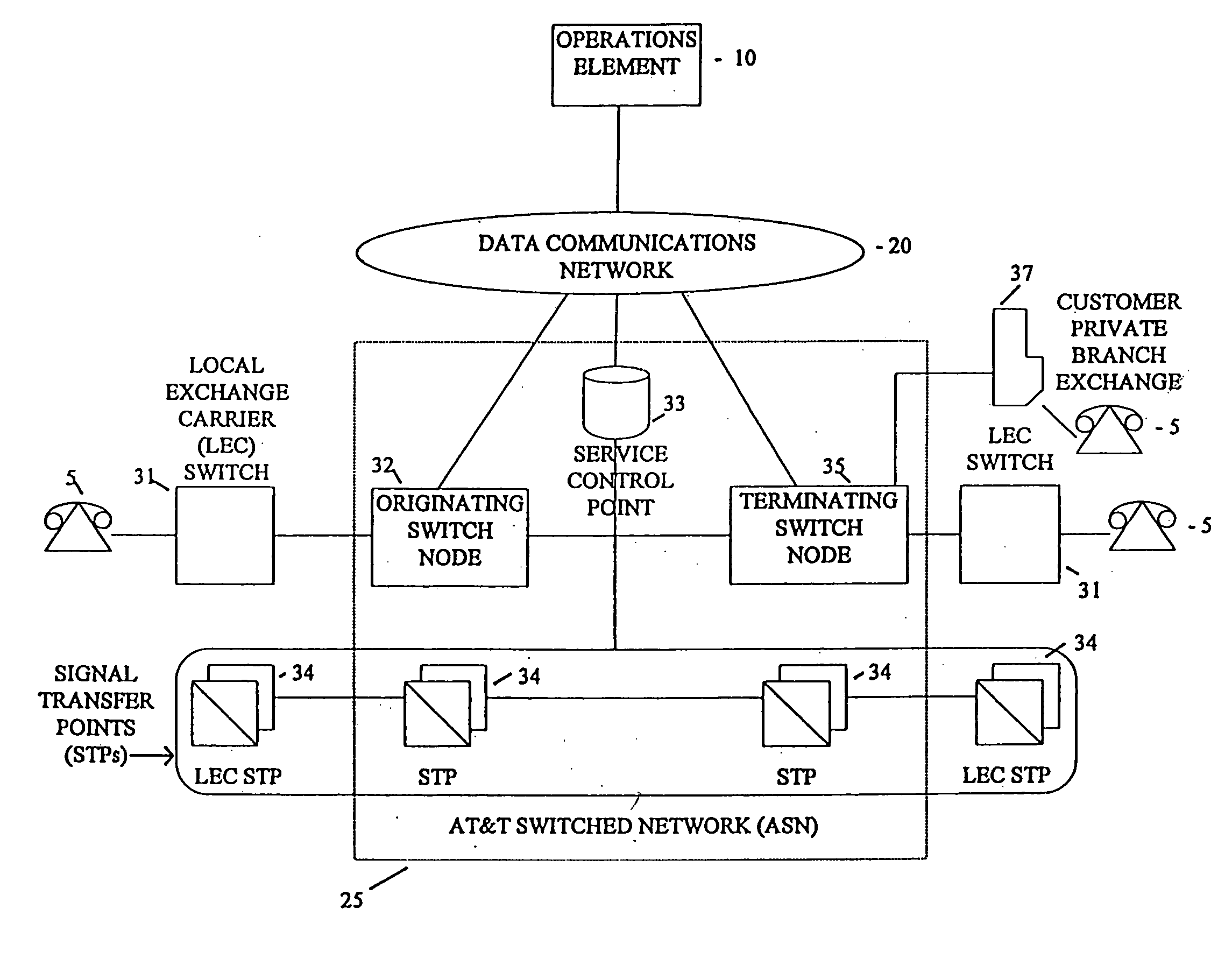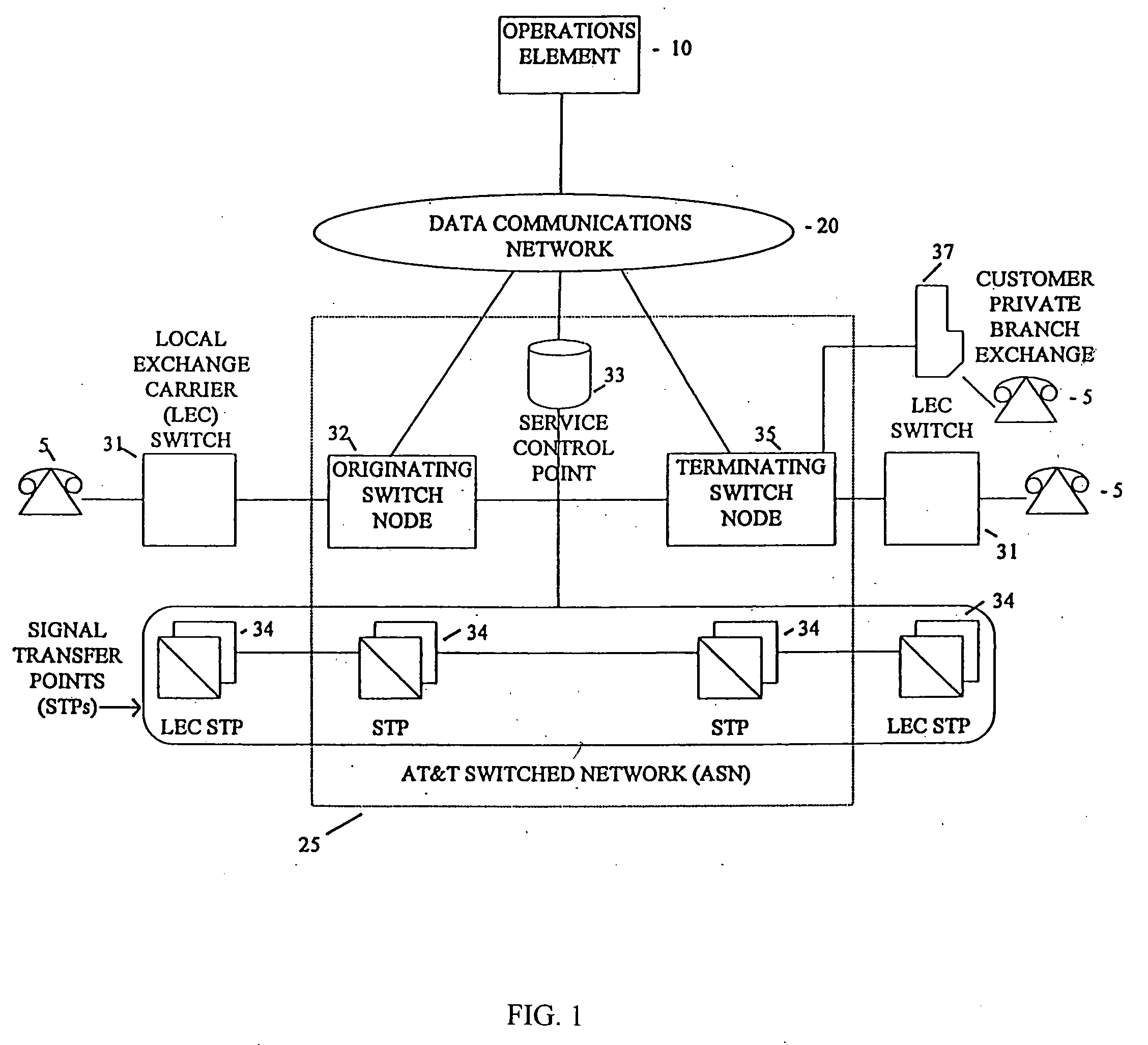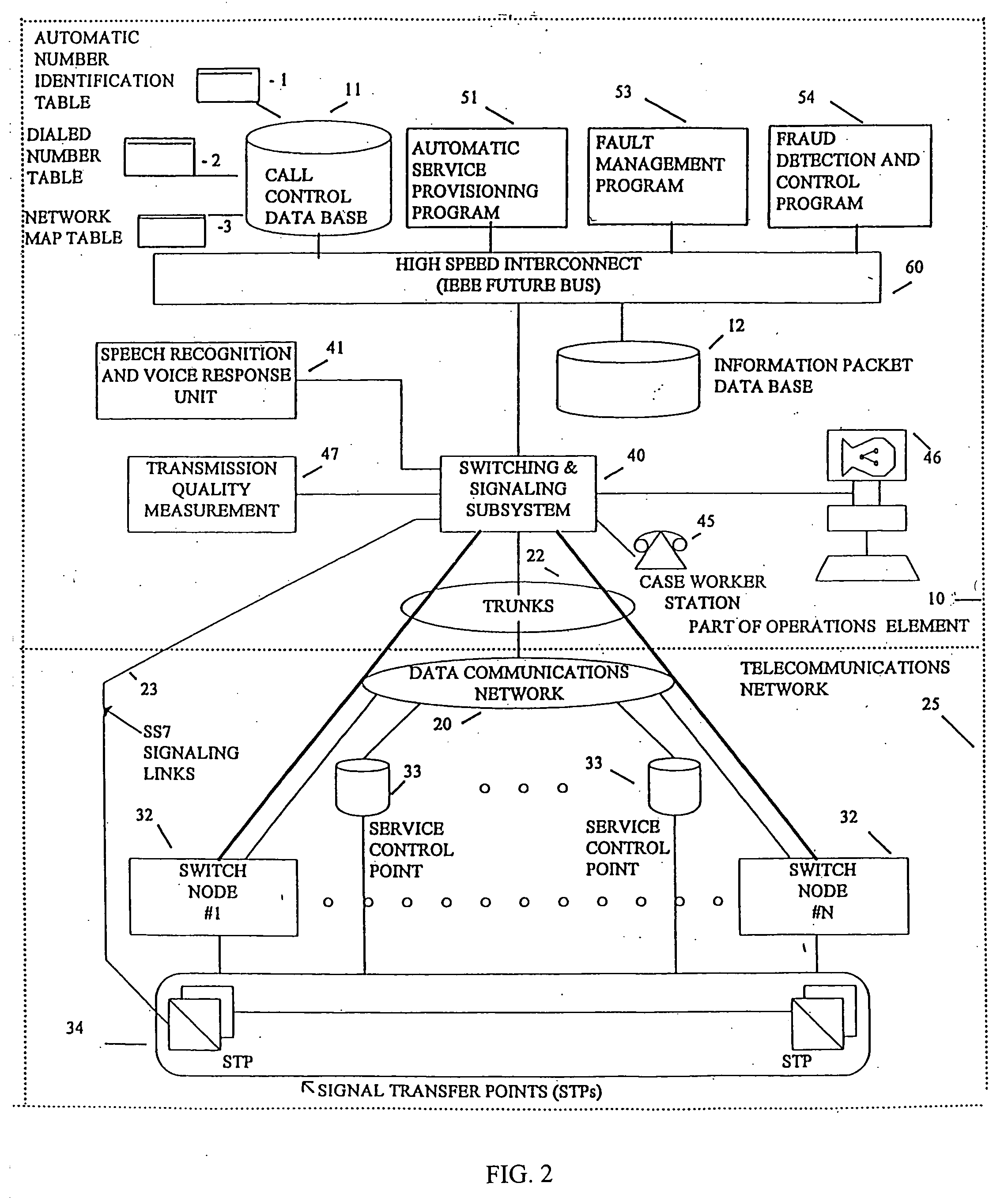Service and information management system for a telecommunications network
a technology of information management system and telecommunications network, applied in the direction of electrical equipment, interconnection arrangements, supervisory/monitoring/testing arrangements, etc., can solve the problems of data collection methods, call torn down, data collection methods not providing information regarding calls which failed in the call set-up stage,
- Summary
- Abstract
- Description
- Claims
- Application Information
AI Technical Summary
Benefits of technology
Problems solved by technology
Method used
Image
Examples
second embodiment
[0072] As illustrated in FIG. 7, the call routing function according to the present invention provides for an information packet 205 associated with a request message 61 to be received by the operations element 10 from a signal transfer point 34, rather than from an originating switch node 32. As in the preferred embodiment, the operations element 10 utilizes the call control database (shown in FIG. 5) to determine the processing and routing required for the call and forwards this information via a response message 62 to the originating switch node 32. The originating switch node 32, however, upon receiving the response message 62, must perform the additional function of correlating the response message 62 with the request message 61 it received from the signal transfer point 34. This correlation may be based on the identity of the local exchange carrier switch 31, the identity of the originating switch node 32, and other information contained in the request message. The originating...
third embodiment
[0074] the call routing function according to the present invention is illustrated in FIG. 8. A signal transfer point 34 detects a request message 61 associated with an incoming call. The signal transfer point 34 appends transaction information to the request message 61, forming an information packet 205, and sends the information packet 205 to a stand-alone operations element 10. The operations element 10 utilizes a call control database 11 which is connected directly to the operations element 10 to determine the processing and routing required for the call. The operations element 10 sends a response message 62 containing routing and processing instructions to an originating switch node 32 or, if the instructions reside on a service control point as discussed in connection with FIG. 6, instructs it to seek instructions from service control point 33 identified in the response message 62. The originating switch node 32 correlates the response message with the request message 61 it re...
PUM
 Login to View More
Login to View More Abstract
Description
Claims
Application Information
 Login to View More
Login to View More - R&D
- Intellectual Property
- Life Sciences
- Materials
- Tech Scout
- Unparalleled Data Quality
- Higher Quality Content
- 60% Fewer Hallucinations
Browse by: Latest US Patents, China's latest patents, Technical Efficacy Thesaurus, Application Domain, Technology Topic, Popular Technical Reports.
© 2025 PatSnap. All rights reserved.Legal|Privacy policy|Modern Slavery Act Transparency Statement|Sitemap|About US| Contact US: help@patsnap.com



